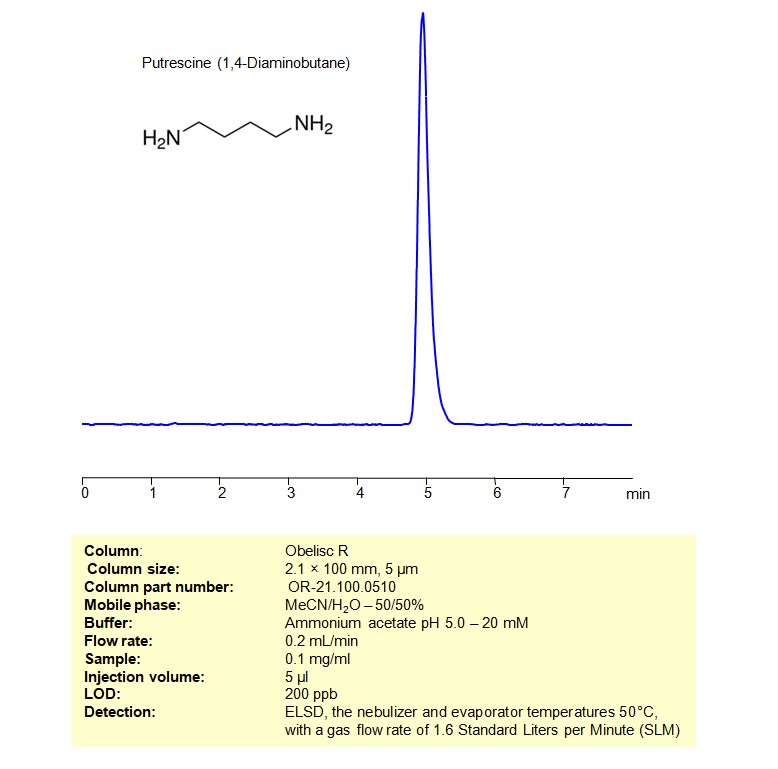HPLC Method for Analysis of 1,4-Diaminobutane (Putrescine) on Obelisc R by SIELC Technologies

High Performance Liquid Chromatography (HPLC) Method for Analysis of 1,4-Diaminobutane (Putrescine)
Putrescine is a biogenic amine and organic compound with the chemical formula. It is a polyamine, which means it contains multiple amino groups. Putrescine is one of the naturally occurring polyamines found in living organisms and is involved in various biological processes.
Biological Roles:
- Putrescine is involved in cell growth, proliferation, and differentiation.
- It plays a role in the synthesis of other important molecules, including certain alkaloids and polyamine derivatives.
- Putrescine is produced by the decarboxylation of ornithine, an amino acid.
Polyamine Family:
- Putrescine is part of a family of polyamines, which also includes spermidine and spermine.
- Polyamines are essential for cell growth, and their levels are tightly regulated in living cells.
Research and Applications:
- Putrescine and other polyamines have been studied for their roles in cancer, neurodegenerative diseases, and other health-related conditions.
- In some industries, putrescine is used as a chemical intermediate for the production of certain polymers and plastics.
Putrescine can be retained and analyzed using an Obelisc R mixed-mode stationary phase column. The analysis employs an isocratic method with a simple mobile phase consisting of water, acetonitrile (MeCN), and ammonium formate as a buffer. Detection is achieved using ELSD
| Column | Obelisc R, 2.1 x 100 mm, 5 µm, 100 A, dual ended |
| Mobile Phase | MeCN/H2O – 50/50% |
| Buffer | Ammonium formate pH 3.0 – 20 mM |
| Flow Rate | 0.2 ml/min |
| Detection | ELSD, the nebulizer and evaporator temperatures 50°C, with a gas flow rate of 1.6 Standard Liters per Minute (SLM) |
| Samples | 0.1 mg/ml |
| Injection volume | 5 µl |
| LOD* | 200 ppb |
| Class of Compounds | Polyamines |
| Analyzing Compounds | 1,4-Diaminobutane (Putrescine) |
Application Column
Obelisc R
Column Diameter: 2.1 mm
Column Length: 100 mm
Particle Size: 5 µm
Pore Size: 100 A
Column options: dual ended





